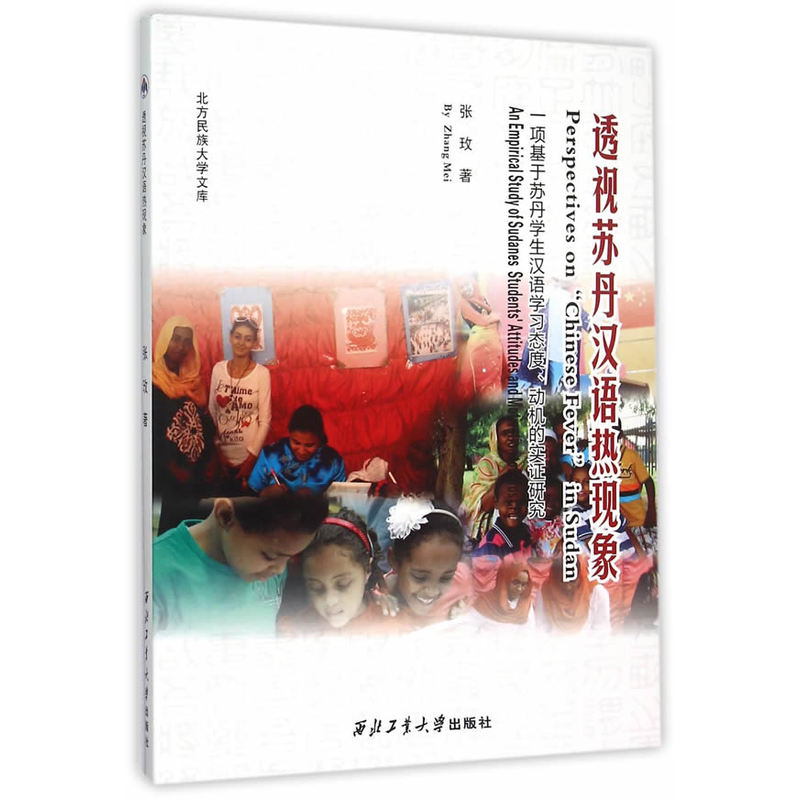
透视苏丹汉语热现象-一项基于苏丹学生汉语学习态度.动机的实证研究
1星价
¥25.1
(6.6折)
2星价¥25.1
定价¥38.0

暂无评论
图文详情
- ISBN:9787561246382
- 装帧:一般胶版纸
- 册数:暂无
- 重量:暂无
- 开本:16开
- 页数:199
- 出版时间:2015-10-01
- 条形码:9787561246382 ; 978-7-5612-4638-2
本书特色
作为阿盟的成员国之一的苏丹,是中国在非洲的第3大贸易伙伴。截至2008年底,中国在苏丹累计投资已超过150亿美元,经济领域的合作为苏丹人民提供了*多的就业岗位,也掀起了他们汉语学习的热潮。 张玫所*的《透视苏丹汉语热现象(一项基于苏丹学生汉语学习态度动机的实证研究)(英文版)/北方民族大学文库》试从语言学中学习态度和动机的视角,来解读苏丹的汉语热现象。
内容简介
作为阿盟的成员国之一的苏丹,是中国在非洲的第3大贸易伙伴。截至2008年底,中国在苏丹累计投资已超过150亿美元,经济领域的合作为苏丹人民提供了多的就业岗位,也掀起了他们汉语学习的热潮。《透视苏丹汉语热现象 一项基于苏丹学生汉语学习态度动、机的实证研究(英文版)》试从语言学中学习态度和动机的视角,来解读苏丹的汉语热现象。
目录
chapter one introduction 1.1 introduction 1.2 statement of the problem 1.3 objectives of the study 1.4 significance of the study 1.5 research questions 1.6 research hypotheses 1.7 methodology 1.8 limitations of the study 1.9 definitions of key terms 1.10 the structure of the studychapter two theoretical background 2.1 language planning & policy (lpp) 2.1.1 definitions 2.1.2 the process & stages of lpp 2.1.3 dimensions of lpp 2.1.4 levels of lpp 2.2 language planning & policy (lpp) in china 2.2.1 the chinese language 2.2.2 lpp implementation in china 2.2.2.1 corpus planning in china 2.2.2.2 status planning in china 2.2.2.3 acquisition planning in china 2.3 language planning & policy (lpp) in sudan 2.3.1 the colonial period 2.3.2 the post colonial period 2.3.3 arabicization of education in sudan 2.4 language attitude 2.4.1 definitions of "attitudes" 2.4.2 attitudes in second & foreign language education 2.5 language motivation 2.5.1 defining "motivation" 2.5.2 theories of motivation in second/foreign language learning (sl/fll) 2.5.2.1 gardner's motivation theory 2.5.2.2 expanding the concept of language learning motivation :the cognitive-situated period 2.5.2.3 contemporary theories of motivation 2.6 chapter summarychapter three literature review 3.1 language attitude 3.2 language motivation 3.3 gender, language, attitudes and motivation 3.4 chapter summarychapter four methodology, data analysis, discussion and interpretation 4.0 introduction 4.1 methodology 4.2 population and samples 4.2.1 the students' group 4.2.2 lecturers' group 4.3 the instruments 4.4 design and procedure 4.4.1 the questionnaire survey 4.4.2 semi—structured interviews 4.4.2.1 students’interview 4.4.2.2 teachers’interview 4.4.3 classroom observation 4.4.4 procedure 4.4.4.1 pilot study for questionnaire survey 4.4.4.2 questionnaire survey 4.4.4.3 interviews 4.4.4.4 in—class observation 4.5 data analysis techniques 4.6 data analysis.discussion and results 4.6.1 sudanese learners’attitudes towards learning chinese language 4.6.1.1 positive attitudes 4.6.1.2 negative attitudes 4.6.1.3 overall attitudes towards learning chinese 4.6.2 sudanese learners'm~tivations for learning chinese language 4.6.2.1 integrative motivation 4.6.2.2 instrumental motivation 4.6.2.3 overall motivation level for learning chinese 4.6.2.4 motivational orientations 4.6.2.5 paired samples t—test for sudanese students’motivational 0ripntationr 4.6.2.6 comparing motivational orientations of students at the chinese department&confucius institute 4.6.3 the impact of attitudes and motivation on students'language proficiency 4.6.3.1 relationship between attitudes and motivation 4.6.3.2 the impact of attitudes&motivation on language proficiency 4.6.3.3 correlation between students’learning attitudes,motivation and language proficiency 4.6.4 gender influence on students’language attitudes and motivation 4.6.4.1 differences in language proficiency between male and female students 4.6.4.2 comparing differences in overall attitudes and motivational orientations between male and female students 4.6.4.3 a comparison of attitudinal&motivational orientation differences caused by genders in chinese department&confucius institute 4.6.4.4 teachers’view on students’attitudes and motivational differences according to gender 4.6.5 changes in attitudes and motivation caused by time/levels 4.6.5.1 changes in attitudes and motivation 4.6.5.2 the reasons for changes in attitudes and motivation among students 4.6.6 teachers’influence on sudanese students in learning chinese 4.6.6.1 students’needs analysis on their chinese class 4.6.6.2 how the teachers impart chinese culture 4.6.6.3 how the teachers help overcome chinese learning barrier of shyness 4.6.6.4 teachers’influence on sudanese students in learning chinese 4.7 chapter summarychapter five summary of findings, implications, recommendations and conclusions 5.1 introduction 5.2 summary of the findings 5.2.1 sudanese students' attitudes towards learning chinese 5.2.2 sudanese students' motivation for learning chinese 5.2.3 attitudes and motivation' impact on students' language proficiency 5.2.4 gender influence on students' language attitudes and motivation 5.2.5 changes in attitudes and motivation caused by time/levels 5.2.6 teachers' influence on sudanese students in learning chinese 5.3 implication 5.4 recommendations 5.4.1 recommendations for motivating students 5.4.2 recommendations for further research 5.5 conclusionappendix appendix 1 questionnaire:arabic version appendix 2 questionnaire:english version appendix 3 interview questions for students appendix 4 interview questions for teachers appendix 5 classroom observation formbibliography
展开全部
本类五星书
本类畅销
-

安徒生童话精选
¥13.6¥40.0 -

地心游记(纯英文)/床头灯英语.3000词读物
¥5.7¥15.8 -

Sons and Lovers
¥8.1¥26.0 -

你往何处去
¥11.2¥33.0 -

小妇人(纯英文)/床头灯英语.3000词读物
¥4.7¥15.8 -

流浪地球刘慈欣
¥16.7¥62.0 -

了不起的盖茨比(纯英文)/床头灯英语.3000词读物
¥4.2¥12.8 -

茶花女
¥3.7¥12.0 -

方法论
¥3.3¥9.5 -

本杰明:富兰克林自传
¥4.2¥13.5 -

企鹅口袋书系列·伟大的思想20:论自然选择(英汉双语)
¥6.3¥14.0 -

命案目睹记
¥14.5¥33.8 -

城堡
¥12.0¥26.0 -

THE GREAT GATSBY-了不起的盖茨比
¥5.0¥16.8 -

巴黎圣母院
¥4.7¥15.5 -

最新英汉百科图解词典-升级版
¥131.0¥168.0 -

沉思录
¥9.7¥21.0 -

英诗选译-孙大雨译文集-(英汉对照)
¥14.0¥36.0 -

考研英语背单词20个词根词缀
¥1.2¥3.2 -

英文疑难详解续篇
¥30.6¥45.0











